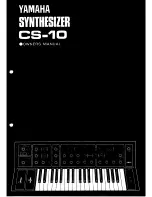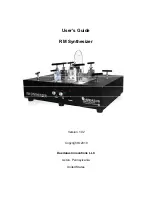
Wave Sequencing 2.0
38
Phase
[-180…+180°]
This controls the start point of the shape. For example, to start in the middle of the shape, set the Phase to
+180°
.
Prob (Probability)
See “Step Probability” on page 31.
Gate
[Truncate, Scale Shape]
Scale Shape:
the shape is scaled in time by the Gate Length (as well as the Timing Step Duration). For example, if Gate
Length is
50%
, the “ADSR” shapes will play twice as fast. Use this to create more variation in the generated shapes.
Truncate
: the shape is scaled in time only by the Timing Step Duration. If Gate Length is less than
100%
, the end of the
shape is truncated.
Gate
This controls how long the Step sounds, as a percentage of the duration from the Timing Lane.
Gate Lane
Preset, Start, End, Loop Start, Loop End, Repeats
See “Standard Lane Controls” on page 30.
Gate Lane Step
Gate Length
[0…100%]
This controls the length of time that the step will sound, as a percentage of the Timing Lane Step Duration.
Probability
[0…100%]
See “Step Probability” on page 31.
Step Seq
This Lane generates a modulation source to control other synthesis parameters, just like envelopes, LFOs, etc.
Important: Wave Sequences run independently per voice. This means that the Step Seq Lane can only modulate per-
voice parameters, such as settings in the Amp, Pitch, Filter, Envelopes, and LFOs. Specifically, the Step Seq Lane cannot
modulate the Mod Knobs, effects, or Vector Envelope.
Step Seq Lane
Preset, Start, End, Loop Start, Loop End, Repeats
See “Standard Lane Controls” on page 30.
Use Shape
[Off, On]
When this is
On
, non-zero values will be scaled by the Shape Lane.
Step Seq Lane Step
Type
[Value + Continuous Mod, Value * /-, Value * , Value + S & H Mod]
Value + Continuous Mod:
The Step uses the programmed value, and modulation continuously affects the value. For
instance, if an LFO is modulating Value, you’ll hear the LFO’s shape during the step.
Value * /-:
The Step’s Value is scaled by a bipolar random amount. The result may be either positive or
negative.










































